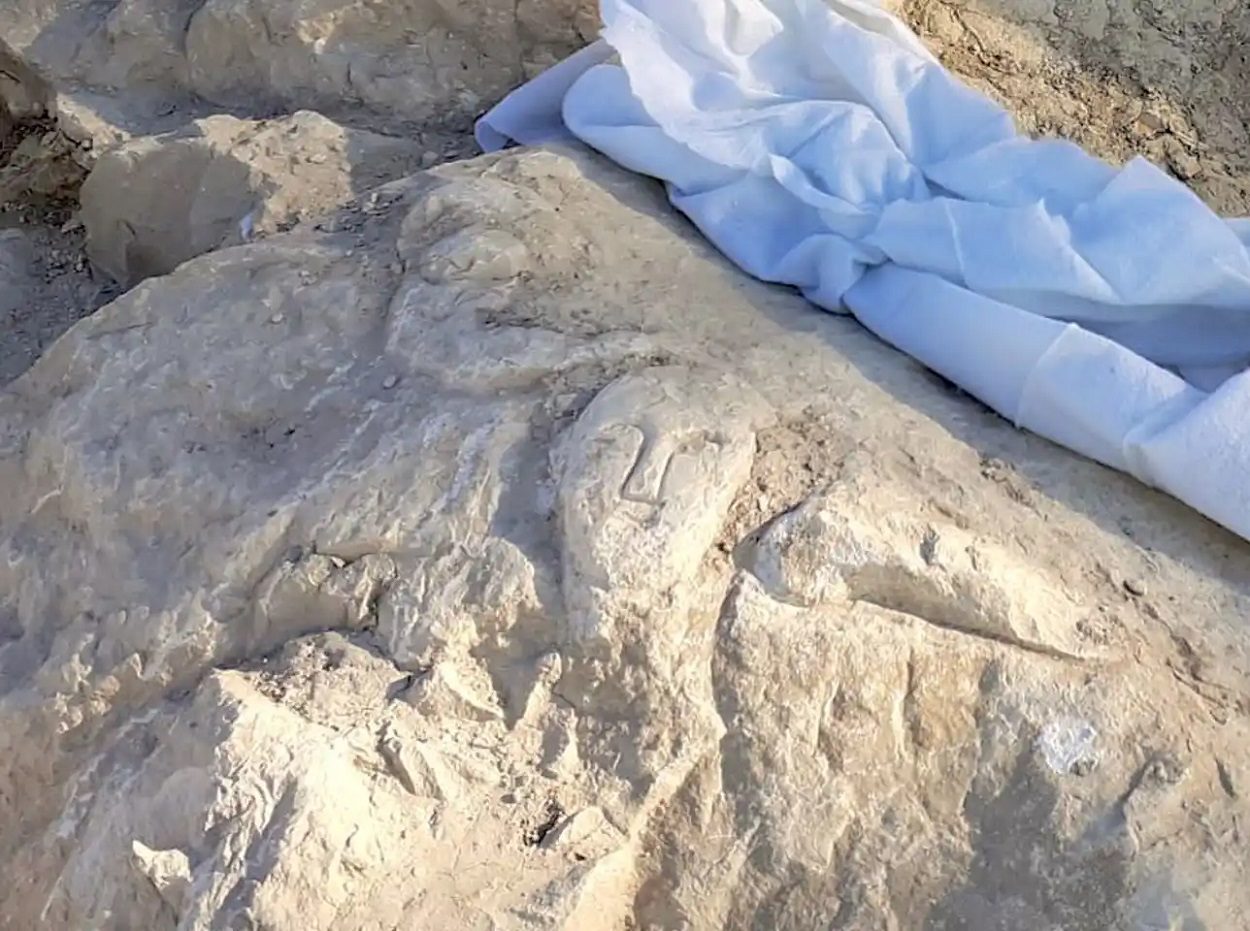Archaeologists from the University of Alicante have discovered a rock carved face at the Tossal de La Cala, a roman fort in Benidorm on the Mediterranean coast of Spain.
Tossal de La Cala was a fort or “castellum” built by General Quinto Sertorio around the year 77 BC during the Sertorian Wars, a civil war fought from 80 to 72 BC between a faction of Roman rebels (Sertorians) and the government in Rome (Sullans) on the Iberian Peninsula (Hispania).
The fort was part of a chain of coastal military enclaves which monitored maritime trade and protected the shore from enemy ships.
Excavations by archaeologists from the University of Alicante have discovered a 2,000-year-old rock carved “inscultura” face consisting of three artistic representations showing a human face, a cornucopia, and a phallus.
The carving measures 57 x 42 centimetres, however, the researchers suggest that parts of the carving are incomplete with the upper right section being missing.
The intention of the carving is unknown, it may have been graffiti or had a ritualistic purpose. The inclusion of a phallus suggests that it may have served to provide protection, as the Roman’s believed that the phallus was the embodiment of a masculine generative power, and was one of the tokens of the safety of the state (sacra Romana) giving protection and good fortune.
Phallic imagery can be found across the Roman world in sculptures, mosaics, and frescoes, and portable objects such as pendants or bulla, to ward off evil that may prey on children (in particular, young boys), or from the wandering evil eye (malus oculus) of men.
The depiction of a cornucopia “horn of plenty” suggests the possibility that the face could represent a god or goddess, as many deities from the Roman pantheon associated with the harvest, prosperity, or spiritual abundance are often shown carrying a cornucopia in Roman reliefs and coins.
Header Image Credit : University of Alicante





